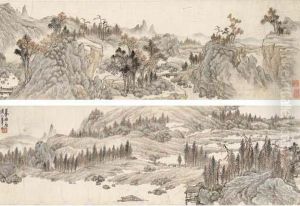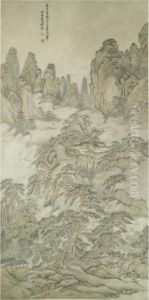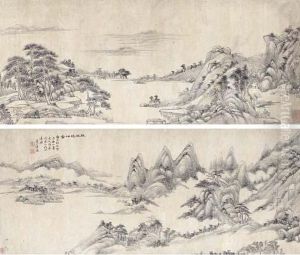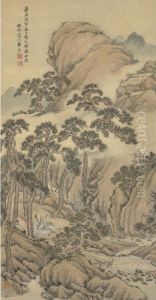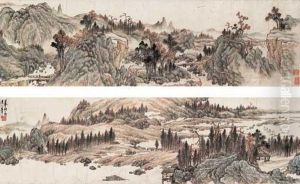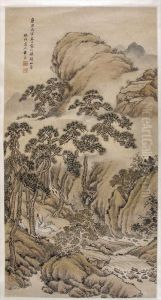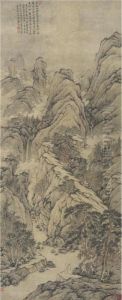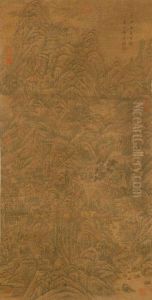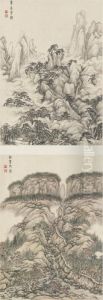Huang Ding Paintings
Huang Ding was a prominent Chinese painter during the Qing Dynasty, which ruled China from 1644 to 1912. Born in 1650 in Jiangsu Province, he lived during a time of significant change and cultural evolution in China. Huang Ding is often associated with the 'Yangzhou School' of painting, a group of artists that flourished in the 18th century in the prosperous commercial city of Yangzhou.
Huang Ding's work is characterized by its fluid brushwork and the use of light ink washes. He specialized in landscapes and was known for his ability to capture the essence of the natural world. His paintings often depicted mountains, rivers, and rural scenes, executed with a sense of spontaneity and vitality that was influenced by earlier masters of the literati tradition of Chinese painting, where the expression of personal cultivation and scholarly ideals was paramount.
Despite the political turmoil of the time, including the fall of the Ming Dynasty and the establishment of the Qing Dynasty by the Manchurian rulers, Huang Ding, like many artists of his era, was able to thrive by serving a new clientele of wealthy merchants and officials who were eager to display their cultural sophistication through the arts.
Huang Ding's work was not only appreciated during his lifetime but has continued to be celebrated for its contribution to the development of Chinese landscape painting. His paintings are held in the collections of various museums and have been the subject of scholarly study, reflecting his enduring legacy in the field of Chinese art. He passed away in 1730, leaving behind a body of work that continues to inspire and influence artists and connoisseurs of Chinese painting.
